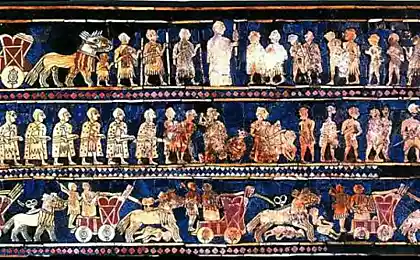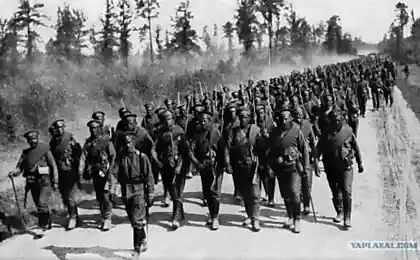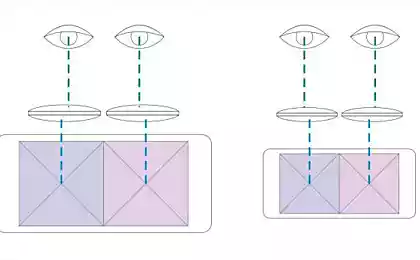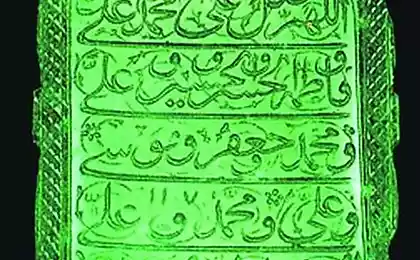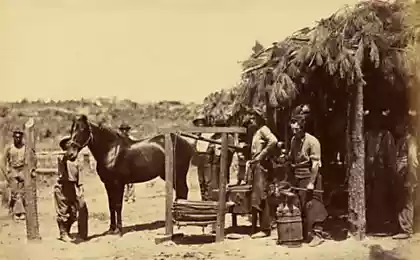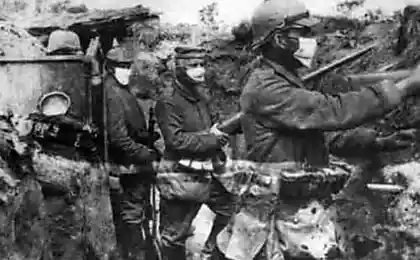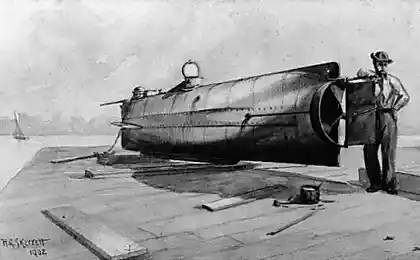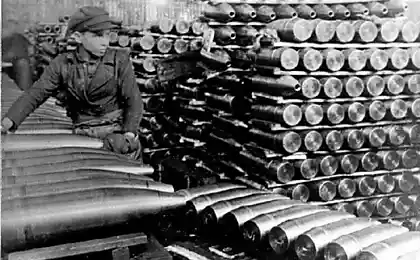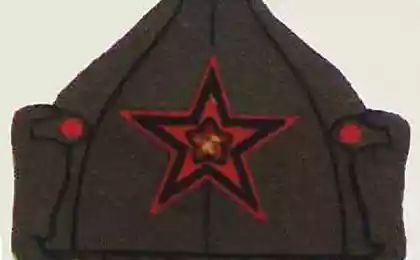484
Carthaginian helmet found during the First Punic war
The origin of the helmet - the battle Akatski Islands, which ended the First Punic war between Rome and Carthage.
Archaeologists have discovered allegedly Carthaginian helmet at the scene of the battle of Akatski Islands (North of Sicily), which ended the First Punic war (264-241 BC). This is the only surviving piece of armor from Carthage found at the scene of the battle, said Dr. Jeff Royal (Jeff Royal) of Florida Foundation RPM Nautical.
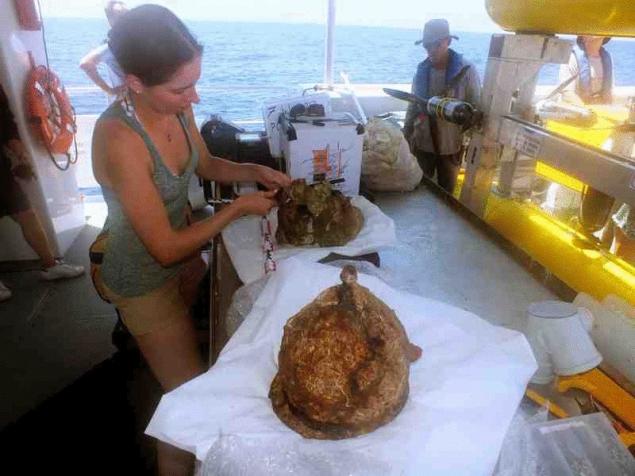
Discovery is very different from helmets of the type Montefortino, widely distributed in Europe. Roman helmets of the type Montefortino easy identifitseerida. They have a hemispherical or domed shape, the finial in the form of small lumps or socket for plume. The rear part of the helmet was bent over a semi-circular shield that protected the neck from a blow from above. Bottom-hung bronze shields-"shields cheeks".
The alleged Carthaginian helmet has nanonic, wide field, protecting the neck from ear to ear, and high, narrow ridge. Find corrosion much as had lain on the seabed for over two millennia. She is now undergoing cleaning and conservation, which will allow you to get more information.
Helmet – one of the latest discoveries made with unmanned submersibles. The work of the expedition changed ideas about naval tactics during the First Punic war.
Previously, Dr. Jeff Royal and his colleagues found that the ships were smaller and more powerful than previously thought. So, archaeologists found 11 bronze battering rams, which was the main Maritime weapon of the day. They were cast specifically for the size of the nasal parts of ships. So the rams can recover the sizes of the logs used for keels. This information in turn allows you to judge the size of the ships. Archaeologists have calculated that their length could not exceed 28 metres. Previously it was thought that the length of vessels reached 40 meters.
Weight of rams – about 125 pounds – says they could destroy aboard ships, and not just punch holes. Battering rams were mounted below the waterline and had three horizontal edges, which were designed for a cutting blow to the enemy ships. Blow the RAM split the ship in two. The distribution of amphorae and other finds on the seabed shows that the ships did not sink relatively intact, and was falling apart on the surface.
The first Punic war between Rome and Carthage lasted 23 years. The main reason for the conflict was the struggle for Sicily. The beginning of the war the Carthaginians possessed the greater part of Sicily (except for the South-Eastern part of Syracuse). The reason for clash of Rome and Carthage began the war between mamertina to Stay and Syracuse tyrant Hieronim II. The latter laid siege to Stay, part of mamertines asked for help to Carthage and another to Rome. The Romans feared that the Carthaginians, Messana will lead to the fact that they will subordinate and Syracuse, that is, spread its authority over all of Sicily.
In the beginning of the war the Romans had some luck. They took the Stay and Agrigento, defeated the Carthaginians and after. The latter become allies of Rome. The Romans gained their first naval victory – with Mils and Acname. 256 Roman troops landed in Africa. After the first victories in the area of Carthage, the Romans were defeated, and the main theater of war moved to the Western part of Sicily. Here the war lasted about 10 years. The Carthaginian commander Hamilcar Barka managed to strike the Romans several significant impacts.
However, on 10 March 241 BC when Akatski Islands, the Roman fleet defeated the Carthaginian. The resulting battle from 20 to 50 ships of the Carthaginians were sunk and 70 captured with their crews. The loss of Carthage ranged from four to six thousand people. The Romans lost 80 ships. Of these, 30 were completely destroyed and another 50 were partially destroyed. This battle ended the First Punic war.
Forbes on materials
Source: nkj.ru
Archaeologists have discovered allegedly Carthaginian helmet at the scene of the battle of Akatski Islands (North of Sicily), which ended the First Punic war (264-241 BC). This is the only surviving piece of armor from Carthage found at the scene of the battle, said Dr. Jeff Royal (Jeff Royal) of Florida Foundation RPM Nautical.

Discovery is very different from helmets of the type Montefortino, widely distributed in Europe. Roman helmets of the type Montefortino easy identifitseerida. They have a hemispherical or domed shape, the finial in the form of small lumps or socket for plume. The rear part of the helmet was bent over a semi-circular shield that protected the neck from a blow from above. Bottom-hung bronze shields-"shields cheeks".
The alleged Carthaginian helmet has nanonic, wide field, protecting the neck from ear to ear, and high, narrow ridge. Find corrosion much as had lain on the seabed for over two millennia. She is now undergoing cleaning and conservation, which will allow you to get more information.
Helmet – one of the latest discoveries made with unmanned submersibles. The work of the expedition changed ideas about naval tactics during the First Punic war.
Previously, Dr. Jeff Royal and his colleagues found that the ships were smaller and more powerful than previously thought. So, archaeologists found 11 bronze battering rams, which was the main Maritime weapon of the day. They were cast specifically for the size of the nasal parts of ships. So the rams can recover the sizes of the logs used for keels. This information in turn allows you to judge the size of the ships. Archaeologists have calculated that their length could not exceed 28 metres. Previously it was thought that the length of vessels reached 40 meters.
Weight of rams – about 125 pounds – says they could destroy aboard ships, and not just punch holes. Battering rams were mounted below the waterline and had three horizontal edges, which were designed for a cutting blow to the enemy ships. Blow the RAM split the ship in two. The distribution of amphorae and other finds on the seabed shows that the ships did not sink relatively intact, and was falling apart on the surface.
The first Punic war between Rome and Carthage lasted 23 years. The main reason for the conflict was the struggle for Sicily. The beginning of the war the Carthaginians possessed the greater part of Sicily (except for the South-Eastern part of Syracuse). The reason for clash of Rome and Carthage began the war between mamertina to Stay and Syracuse tyrant Hieronim II. The latter laid siege to Stay, part of mamertines asked for help to Carthage and another to Rome. The Romans feared that the Carthaginians, Messana will lead to the fact that they will subordinate and Syracuse, that is, spread its authority over all of Sicily.
In the beginning of the war the Romans had some luck. They took the Stay and Agrigento, defeated the Carthaginians and after. The latter become allies of Rome. The Romans gained their first naval victory – with Mils and Acname. 256 Roman troops landed in Africa. After the first victories in the area of Carthage, the Romans were defeated, and the main theater of war moved to the Western part of Sicily. Here the war lasted about 10 years. The Carthaginian commander Hamilcar Barka managed to strike the Romans several significant impacts.
However, on 10 March 241 BC when Akatski Islands, the Roman fleet defeated the Carthaginian. The resulting battle from 20 to 50 ships of the Carthaginians were sunk and 70 captured with their crews. The loss of Carthage ranged from four to six thousand people. The Romans lost 80 ships. Of these, 30 were completely destroyed and another 50 were partially destroyed. This battle ended the First Punic war.
Forbes on materials
Source: nkj.ru
A new concept from Volkswagen Passat BlueMotion
The researchers intend to equip electric vehicles with sensors monitoring air cleanliness


